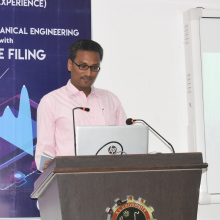Recent Labour Law reforms in India

Legal & Compliance
233 week ago — 10 min read
The new labour law reforms will help Indian with the ease of doing business. As per the 'Doing Business' 2020 report, India had jumped 14 places to the 63rd position in the ease of doing business rankings. India has improved its rank by 79 positions in the last five years (2014-19)
In the thrust of the Central Government’s continued reforms, 44 Central labour laws are mostly subsumed under 4 Labour Codes as follows.
- The Code on Wages, 2019
- The Occupational Safety, Health, and Working Conditions Code, 2020
- The Code on Social Security, 2020
- The Industrial Relations Code, 2020
Also read: Government proposes major labour law changes for ease of compliance
Which law subsumed in to which code?
|
|
The Occupational Safety, Health, and Working Conditions Code, 2020 |
The Code on Social Security, 2020 |
The Industrial Relations Code, 2020 |
|
Replaces 4 labour laws, like; 1.The Payment of Wages Act, 1936 2.The Minimum Wages Act, 1948 3.The Payment of Bonus Act, 1965 4.The Equal Remuneration Act, 1976. |
Replaces 13 labour laws, like; 1.Factories Act, 1948; 2.Mines Act, 1952; 3.Dock Workers Act, 1986; 4.The Contract Labour Act, 1970; 5.Inter-State Migrant Workers Act, 1979, and more |
Replaces 8 labour laws, like; 1.The Employees Compensation Act, 1923 2.ESI 3. EPF & MP 4. Maternity Benefit Act, 1961 5. The Payment of Gratuity Act, 1972 6. Cine workers and Welfare Fund Act 7. Building and other Construction workers Cess Act 8.The Unorganized Workers Social Security Act, 2008 |
Replaces 3 labour laws, like; 1.The Industrial Disputes Act, 1947;
2.The Trade Unions Act, 1926; and 3. The Industrial Employment (Standing Orders) Act, 1946. |
The Code on Wages, 2019 was already approved by the Parliament of India and received the assent of the President on the 8th August 2019, and published for general information for the public. But the code yet to be notified by the Central Government by notification in the Official Gazette.
Three new Labour Codes
- The Industrial Relations Code, 2020
- The Code on Social Security, 2020
- The Occupational Safety, Health and Working Conditions Code, 2020
Covering reforms for over 50 crore workers from the organised, unorganised and self-employed sector were introduced by the Government in the Parliament and were passed by Lok Sabha on 22, September 2020 and Rajya Sabha on 23, September 2020, yet to receive the assent of the President of India in due course.
These path-breaking reforms in the country will help to attract the Foreign Direct Investment (FDI) and also domestic investment from the entrepreneurs and will bring total transparency in the system. Labour Codes will establish transparent, answerable and simple mechanism reducing to one registration, one license and one return for all Codes.
Also read: Mandatory compliances for a Private Limited Company in India
The salient features of the three codes are as follows:
The Code on Social Security, 2020
(i) The facility of ESIC would now be provided in all districts in India.
(ii) EPF scheme will apply to establishments with 20 or more employees.
(iii) The EPF, EPS, EDLI, and ESI Schemes will be financed through a combination of contributions from the employer and employee.
(iv) Establishments working in hazardous sectors would mandatorily be linked with ESIC, even if there is only one worker working in it.
(v) ESI scheme will apply to certain establishments with 10 or more employees, and to all establishments which carry out hazardous or life-threatening work notified by the Central Government.
(vi) The code provides for the establishment of several bodies to administer social security schemes.
(vii) EPFO's coverage would be applicable to all establishments having 20 workers. At present, it was applicable only on establishments included in the schedule.
(viii) To formulate various schemes for providing comprehensive social security to workers in the unorganised sector. A 'Social Security Fund' will be created on the financial side in order to implement these schemes.
(ix) Gratuity has been made for Fixed Term Employee and there would not be any condition for minimum service period for this.
(x) With the aim of making a national database for unorganised sector workers, registration of all these workers would be done on an online portal.
(xi) It has been made mandatory for all establishments with 20 or more workers to report the vacancy position in their establishments. This information would be given on the online portal.
The Occupational Safety, Health and Working Conditions Code, 2020
(i) The code will apply to establishments employing at least 10 workers.
(ii) It will apply to all mines, docks, and establishments carrying out any hazardous or life-threatening activity may be notified by the Central Government.
(iii) Establishments covered by the code are required to register within 60 days.
(iv) No worker will be required or allowed to work in any establishment for more than eight hours in a day.
(v) Overtime work, workers must be paid at twice the rate of daily wages. Nor consent of workers is required for overtime work.
(vi) Women can work past 7 pm and before 6 am, subject to any safety-related or other conditions prescribed by the Government.
(vii)The Central and State governments will set-up the Occupational Safety and Health Advisory Boards at the national and state level.
(viii) The Government may require certain establishments to constitute safety committees in case of a certain class of workers.
(ix) Working conditions will be notified by the Central Government.
(x) Welfare facilities such as canteens, first aid boxes, and creches, may be provided as per standards notified by the Central Government.
(xi) Free health check-up once a year by the employer for workers which are more than a certain age.
(xii) Legal right for getting appointment Letter given to workers for the first time.
(xiii) Cine workers have been designated as an audiovisual worker so that more and more workers get covered under the code. Earlier, this security was being given to artists working in films only.
The Industrial Relations Code, 2020
(i) Recognition to Trade Unions at Central and State level. This recognition has been given in the labour laws for the first time.
(ii) Constitution of Bi-partite forums for dispute resolution.
(iii) A provision for 'Negotiating Union' and 'Negotiating Council' has been made for undertaking negotiation on any dispute.
(iv) All industrial establishments with at least 300 workers must prepare standing orders.
(v) The code allows for industrial disputes to be voluntarily referred to arbitration by the employer and workers.
(vi) Central or State governments may appoint Conciliation Officers to mediate and promote settlement of industrial disputes.
(vii) No person employed in any industrial establishment shall go on stake, in breach of contract.
(viii) Provision for Re-Skilling fund has been made in the law for the first time. Its aim would be to re-skill those workers who have been fired from their jobs.
(ix) Matter may be taken straight to the tribunal in case the dispute is not resolved at the conciliation stage. At present, the case is referred to the tribunal by the appropriate Government.
(x) After recognition of Fixed Term Employment, workers will get the option of Fixed Term Employment instead of contract labour. Under this, they would get benefits of hours of work, salary, social security and other welfare benefits like a regular employee.
(xi) Arrangement for approaching the Tribunal has been made for resolving disputes arising between Trade Unions. Less time would be required for resolving their disputes.
Conclusion
All old and legacy 44 Central labour laws are mostly subsumed under 4 Labour Codes as discussed above. Labour Codes will establish transparent, answerable and simple mechanism reducing to one registration, one license and one return for all Codes. Hence the professionals, industry and the entrepreneurs shall get familiar with these labour codes for effective implementation in the days to come.
Also read: New definition of MSMEs & Udyam registration
To explore business opportunities, link with me by clicking on the 'Connect' button on my eBiz Card.
Image source: shutterstock.com
Disclaimer: The views and opinions expressed in this article are those of the author and do not necessarily reflect the views, official policy or position of GlobalLinker
Posted by
Anil Kumar Ganga"Ananya legal LLP" is a full service, dynamic, and trustworthy Corporate Advisory and Legal Consultancy Limited Liability Partnership (LLP) Firm that specializes in a...
View Anil 's profile
Other articles written by Anil Ganga
Process of Trademark Registration in India
153 week ago
Most read this week
Trending
Ecommerce 4 days ago













Comments
Share this content
Please login or Register to join the discussion